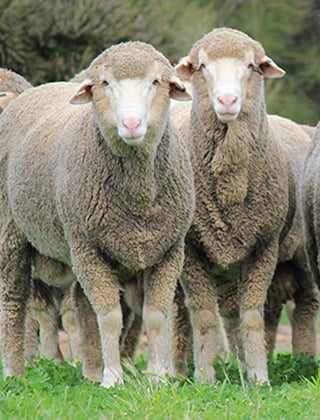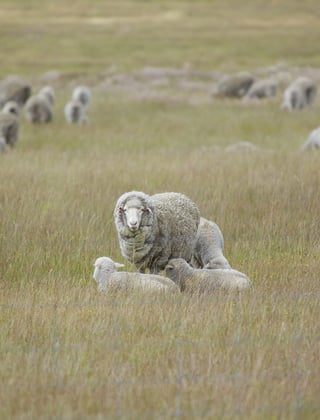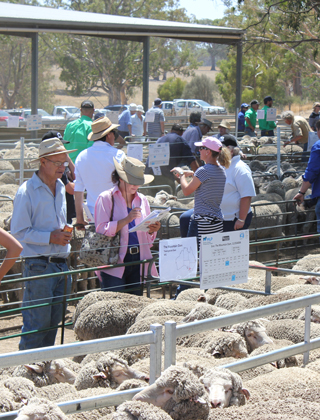Welcome to Australian Wool Innovation, a hub for the woolgrowers of Australia.
Not a woolgrower? Looking for information about wool products, wool care or wool processing?
The Woolmark Company is the global authority on wool. Visit Woolmark.com instead.
Visual Sheep Scores guide updated for 2024
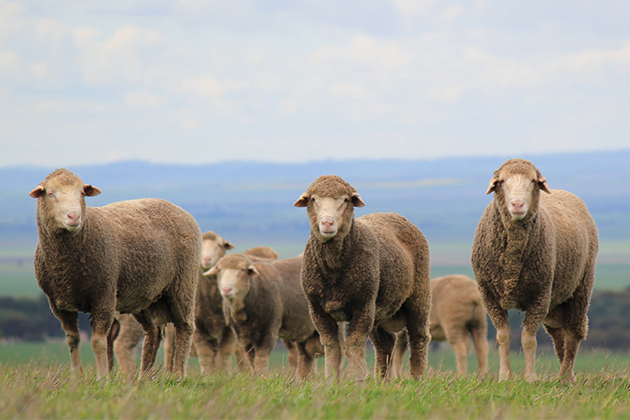
The Visual Sheep Scores guide is a pocket guide for commercial and stud sheep breeders, providing a standardised framework for assessing and scoring visual traits for all breeds of sheep.
The widely used Visual Sheep Scores booklet has recently been reviewed, and version 4 of the industry standard for visual scoring is now available in hard copy and online (PDF) versions.
The review, carried out through industry-wide consultation with users of the scores, has resulted in the addition of a range of new scores as well as the adjustments and improvements to current scores to make them easier to understand and record.
First published in 2007 by AWI and MLA, in conjunction with Sheep Genetics and the Australian Merino Sire Evaluation Association, the Visual Sheep Scores guide provides a common language across all sheep breeds to evaluate and record economically important visual traits.
Version 4 sees the addition of a further two sets of visual scores that can help stud and commercial sheep breeders improve their flocks even further.
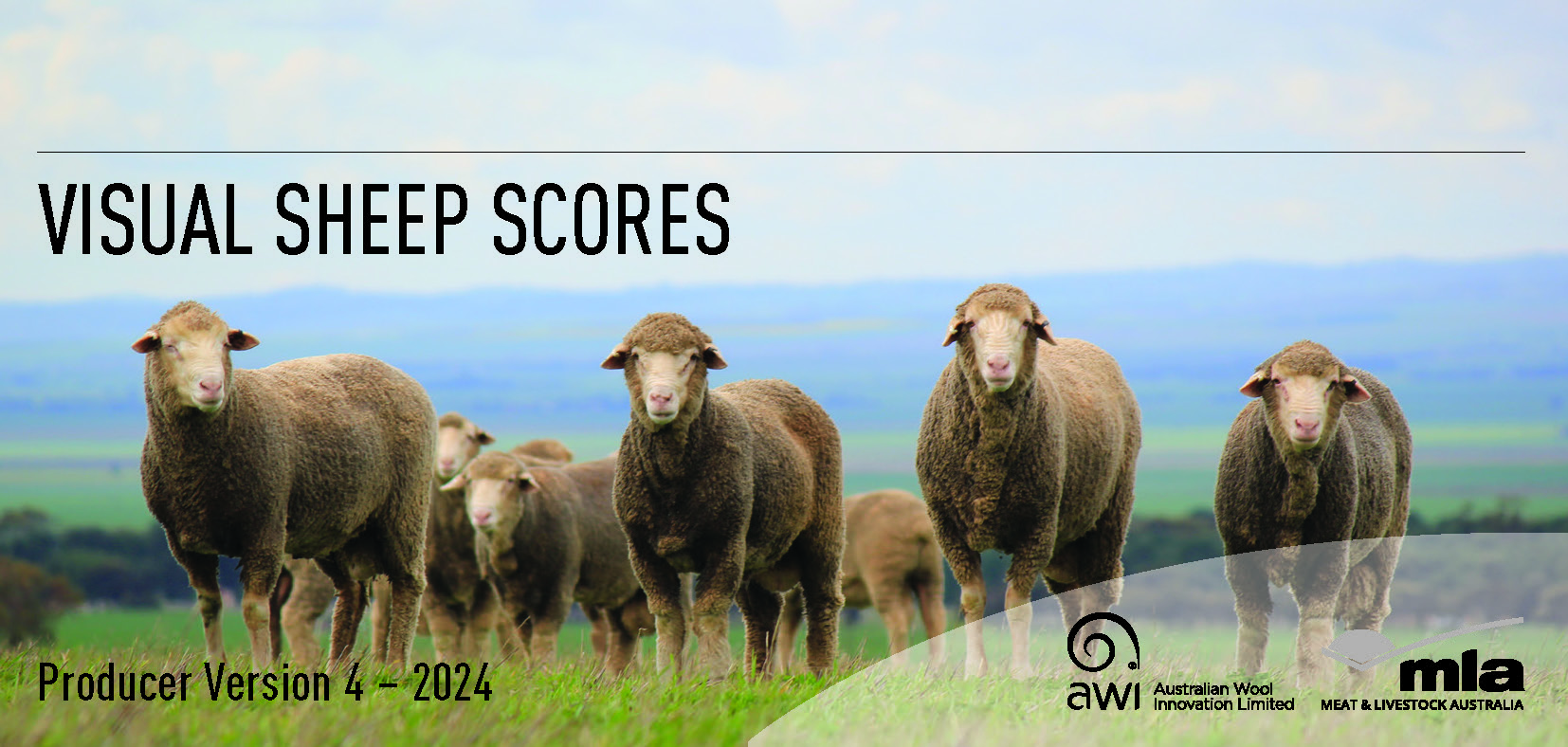
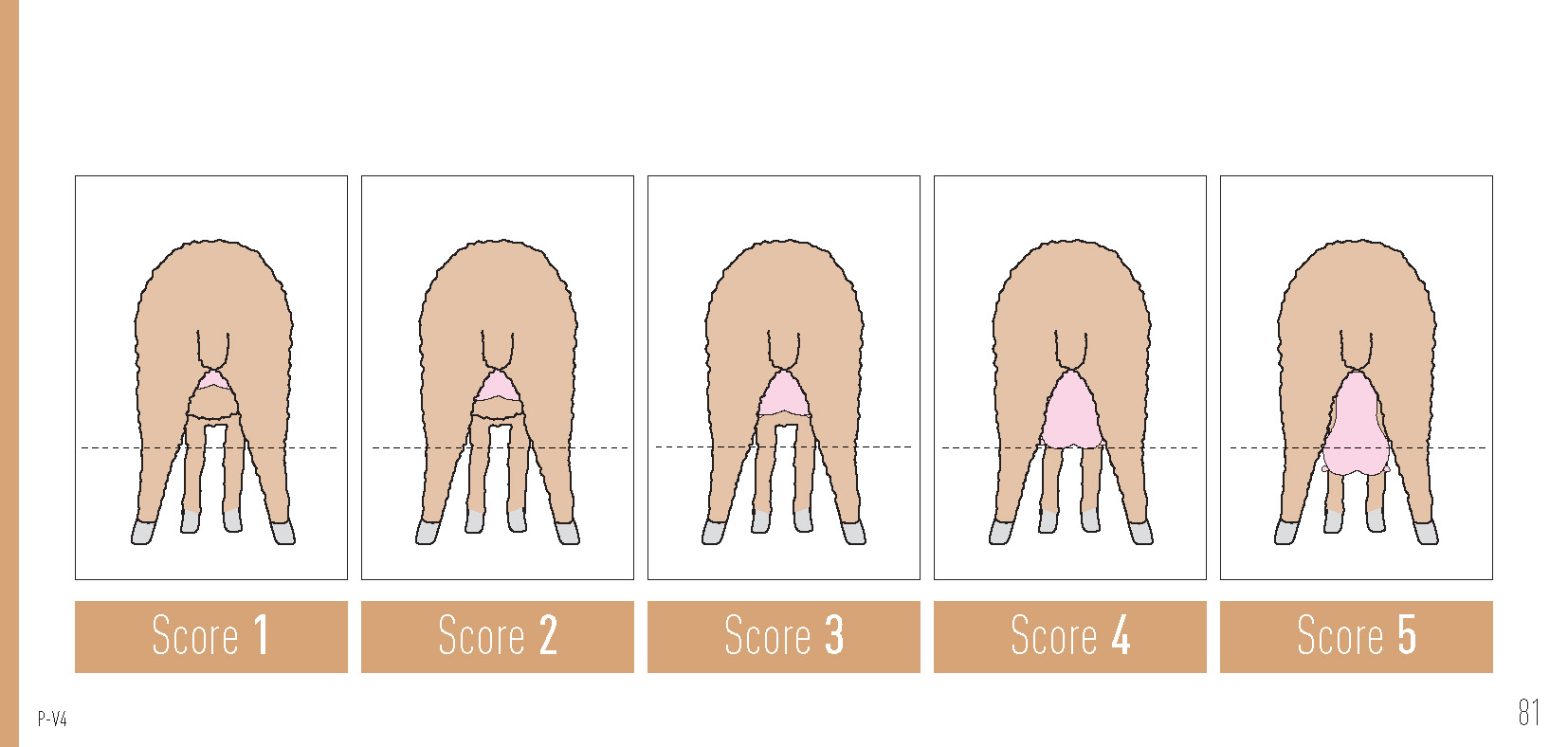
The cover and sample page (Udder Depth) from the updated Visual Sheep Scores guide.
Firstly, five new feet and legs scores have been added. These are Hocks, Front legs, Pasterns, Front toes and Back toes. The individual component traits describing the structure of the feet and legs replace the previous combined feet and leg score. These new scores, firstly drafted by the Balmoral Breeders group which manages the long-running and very successful Balmoral Merino Sire Evaluation trial in western Victoria, are aimed at teasing apart the many factors that are important to overall feet and leg conformation.
Tom Silcock, a long-time member of Balmoral Breeders, says that over many years of feet and leg scoring the sire evaluation progeny in the trials that they run, it became obvious to them that the original scoring system was not giving them all the information they needed.
“By focusing on the individual component traits, we are better able to identify the specific areas that are leading to feet and leg faults and can work on improving those,” Tom said.
The other new traits included in the Visual Sheep Scores guide are three udder and teat scores. Developed as part of an add-on project to the Merino Lifetime Productivity (MLP) project at the New England trial site in northern NSW, the new scores are Udder depth, Teat size and Teat placement.
Lead researcher on the MLP add-on project, Erin Smith from the University of New England, says that her work was able to show that the three new udder and teat scores were not only heritable and therefore able to be selected for, but were associated to both lamb survival and weaning weight.
“We looked at a range of udder and teat traits over the course of the New England MLP trial. Udder depth, Teat size and Teat placement were shown to offer the largest benefit to breeders when scored, whilst being relatively easy to assess either at lambing itself or through to weaning,” Erin said.
By using a standard scoring system for visual traits and having records submitted to the Sheep Genetics MERINOSELECT database, Australian Sheep Breeding Values (ASBVs) will be able to be developed for these new traits over time to allow breeders to compare the genetic potential of sheep regardless of the environment they are managed in.
More information: Download at www.wool.com/vss-2024 or order a hard copy by emailing merinosuperiorsires@bcsagribusiness.com.au
This article appeared in the September 2024 edition of AWI’s Beyond the Bale magazine. Reproduction of the article is encouraged.






